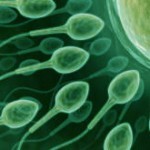 It’s not the mother load of discoveries in our field, but it’s pretty close. It tells us that the mother load is definitely out there…and within reach. Yup, the good news is that real. live, old-fashioned sperm were made in a dish… at least for mice.
It’s not the mother load of discoveries in our field, but it’s pretty close. It tells us that the mother load is definitely out there…and within reach. Yup, the good news is that real. live, old-fashioned sperm were made in a dish… at least for mice.
The Holy Grail: Artificial Sperm
For the 55,000 reproductive age cancers survivors annually in the U.S. and a host of other men who are sterile due to injury, genetics, exposures and the like, this is good news. Despite the availability of utterly fantastic reproductive technologies like sperm mapping, in vitro fertilization and intracytoplasmic sperm injection, some men still do not have sperm to use them. The standard of care in reproductive medicine today is a sperm: a mature one, with a tail, and hopefully moving or at least alive.
And the sperm can come from anywhere. Often, men with no sperm in the ejaculate will have sperm within thereproductive organs such as the testicle or epididymis. These sperm work great to help them become fathers. But there are many other men do not have any sperm, anywhere, especially men with childhood cancers who were blasted with sterilizing treatments before they even reached puberty and made their first sperm. Clinically, I see these patients all the time and this is the crowd of men I am very motivated to help in my short time on this good earth.
The Finding: Functional Sperm for Mice
The recipe to produce functional sperm from stem cells precursors has eluded researchers for 50 years. There have been many false starts, including the last one in 2009 out of Newcastle that was published and then retracted from print by the editors one week later. But, a group from Yokohama City Japan nailed it and recently published functional mouse sperm from testis stem cell precursors.
From reading the paper, it is clear that it took several years of constant, diligent work to find the key ingredients to make it happen. In my opinion, the secret sauce was that our recent, vastly improved understanding of stem cell biology really enlightened the science. They took testicular tissue from newly born mice that contained only stem cells (no sperm, just sperm precursors) and put them in a jello-like environment. Getting them to grow was the trickiest part and finding the right food was also critical.
How is This Sperm Different?
What made this paper great was that the scientists made reproductively “competent” sperm. They took the artificially created sperm and used them with high technology approaches to create baby mice. Then, they let the baby mice grow up and mate. Remarkably, the offspring of these mated mice were normal. Can’t ask for much more from a sperm now can we? Many have tried, including some of my closest colleagues, but no one has gone this far before. Bravo!
So now, all we have to do is replicate this in humans, something that I have been pursuing for several years with colleagues. What is so uplifting for me about this paper is that it seems that making human sperm in a dish is really more evolutionary than revolutionary science. I better go buy some more of that midnight oil….



